Home Decor Ideas to Make Your Home Feel Like a Luxury Hotel
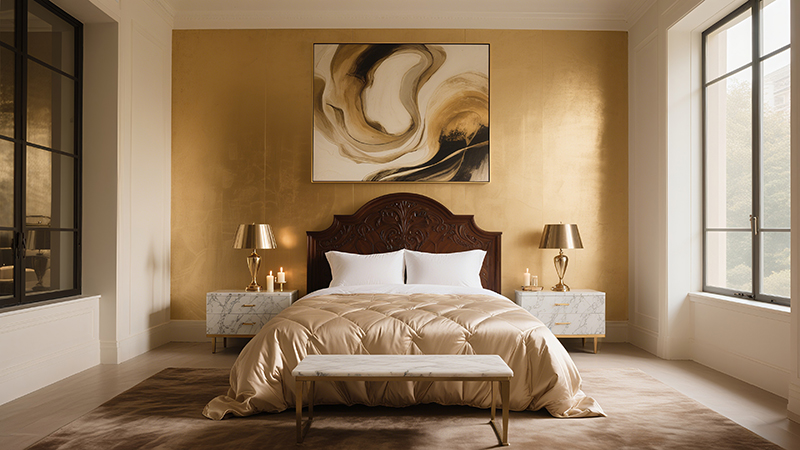
Contents
- 1. Start with a Neutral Colour Palette
- Why neutrals work
- Pro tips for nailing the look:
- 2. Invest in High-Quality Bedding
- The foundation
- Care matters too
- Bonus
- 3. Layer Your Lighting
- The three layers of lighting (and how to use them)
- 4. Declutter and Streamline
- Storage solutions that feel luxurious (not utilitarian)
- Hotel hack
- 5. Add Statement Artwork
- Choosing the right art
- Hanging tips
- 6. Incorporate Luxe Textures
- Mixing textures (without overdoing it)
- Room-by-room texture ideas
- 7. Upgrade Your Bathroom
- Key upgrades
- Hotel trick
- 8. Create a Cosy Reading Nook
- Designing your reading nook
- Personal touches make it special
- Hotel inspiration
- 9. Use Mirrors to Enhance Space
- How to use mirrors strategically
- Avoid these mistakes
- 10. Pay Attention to Details
- Small touches with big impact
- Seasonal tweaks keep things fresh
- Hotel philosophy
- Conclusion
Ever stepped into a luxury hotel lobby and felt an instant wave of calm? The soft hum of conversation, the warmth of layered lighting, the way every texture—from the velvet sofa to the crisp linens—feels intentional. It’s not magic; it’s design. The best hotels master the art of balancing comfort and sophistication, making guests feel both pampered and at home. The good news? You don’t need a five-star budget to replicate that vibe. With thoughtful tweaks and attention to detail, your space can exude that same “hotel luxury” every day. Here’s how to do it, broken down into 10 actionable steps that preserve the core of timeless elegance.
1. Start with a Neutral Colour Palette
Luxury hotels are masters of the “quiet luxury” aesthetic, and neutral colour palettes are their secret weapon. Think of the serene whites of a Ritz-Carlton suite, the warm beiges of a Four Seasons bedroom, or the soft greys of a St. Regis living area—these tones don’t scream for attention, but they create a foundation of calm that makes any space feel expansive and timeless.
Why neutrals work
They act as a blank canvas, allowing textures, lighting, and statement pieces to shine without clashing. They also adapt to changing seasons—swap out a few decor items, and your space feels fresh without a full overhaul. But “neutral” doesn’t mean one-note. The key is to mix warm and cool neutrals to add depth. For example, pair a soft cream wall (warm) with a light grey sofa (cool), or layer a taupe rug (warm) under a white linen curtain (cool).
Pro tips for nailing the look:
- Consider your room’s light: South-facing rooms, flooded with bright sunlight, can handle cooler neutrals (pale greys, icy whites) without feeling cold. North-facing rooms, which get softer, indirect light, benefit from warmer tones (buttercream, sand) to add coziness.
- Add subtle undertones: A white with a hint of pink (like “blush ivory”) feels softer than stark white; a grey with green undertones (like “moss grey”) adds organic warmth.
- Texture is your friend: Without bold colours, texture prevents monotony. Drape a chunky knit throw over a beige armchair, layer a jute rug under a plush cream carpet, or hang linen curtains with a subtle weave—these details keep neutrals from feeling flat.
Luxury hotels like Aman Resorts take this further, using natural materials (travertine, oak) in neutral hues to connect indoor spaces with the outdoors, creating a sense of harmony that’s inherently luxurious.
2. Invest in High-Quality Bedding
A hotel bed isn’t just a place to sleep—it’s a focal point of indulgence. Think of sinking into a Westin “Heavenly Bed” or a Peninsula Hotel mattress: the layers, the softness, the way it feels both supportive and cloud-like. Recreating that at home starts with prioritizing quality over quantity.
The foundation
Start with the mattress. Even a mid-range mattress with a memory foam topper can mimic the plushness of high-end hotels. But the real magic is in the layers above.
- Sheets: Aim for 400–600 thread count (anything higher can feel heavy and less breathable). Egyptian cotton or Pima cotton is ideal—they’re durable, soft, and get better with each wash. Linen sheets are another great option; their relaxed, slightly rumpled look adds casual luxury, and they’re naturally moisture-wicking (perfect for hot sleepers).
- Pillows: Mix and match for depth. Use two firm Euro shams (26×26 inches) as a base, then layer two standard pillows (for sleeping) in coordinating cases, and top with a lumbar pillow or a small decorative pillow (think velvet or silk) for visual interest. Hotel trick: Stuff pillows with a mix of down and feathers—down for softness, feathers for structure.
- Duvet & layers: A lightweight down comforter (or down-alternative for allergy sufferers) is key. Fold a cashmere or merino wool throw at the foot of the bed—its texture adds warmth, and it’s practical for chilly nights. For a hotel-worthy finish, iron the top sheet’s edge so it peeks out 6–8 inches above the duvet—crisp details elevate the look.
Care matters too
Wash sheets in cold water with mild detergent to preserve softness; air-dry when possible to avoid shrinking. Hotels replace their bedding regularly, but with proper care, your high-quality set can last for years.
Bonus
Add a bed skirt (in a neutral tone) to hide the box spring and create a streamlined look, and invest in a mattress protector to keep your bed fresh—small touches that make a big difference.
3. Layer Your Lighting
Lighting is the unsung hero of luxury hotel design. Walk into a Mandarin Oriental lobby, and you’ll notice it: soft overhead lights, glowing table lamps, warm wall sconces—all working together to create a mood that’s inviting, not harsh. This “layered lighting” approach transforms a room from functional to feeling like a sanctuary.
The three layers of lighting (and how to use them)
- Ambient lighting: This is the base layer, providing overall illumination. In hotels, this might be recessed ceiling lights or a chandelier with dimmable bulbs. At home, swap harsh overhead fluorescent lights for warm LED recessed lights (2700K–3000K for a golden glow). For bedrooms, a semi-flush mount fixture with a fabric shade softens the light.
- Task lighting: This targets specific areas for activities like reading, working, or applying makeup. Hotels use table lamps with adjustable arms next to beds, under-cabinet lights in bathrooms, and desk lamps in work nooks. At home, place a brass or ceramic table lamp on your nightstand (with a linen shade to diffuse light) and a floor lamp behind your reading chair—position it so the light hits the page, not your eyes.
- Accent lighting: This adds depth and drama, highlighting art, architecture, or decor. Hotels use picture lights above artwork, LED strips behind headboards, or small spotlights on shelving. Try placing a string of warm white fairy lights in a glass vase on your coffee table, or installing wall sconces on either side of a mirror to eliminate shadows.
Dimmer switches are non-negotiable. They let you adjust the mood—bright for morning routines, dim for movie nights. Candles are another hotel staple: opt for soy or beeswax candles in neutral vessels (matte black, white ceramic) to avoid clashing, and group 3–5 of varying heights on a tray for a cozy focal point.
4. Declutter and Streamline
Luxury hotels feel serene because they’re meticulously organized—no stray cords, no piles of magazines, no half-empty toiletries. Clutter creates visual noise, which triggers stress; a streamlined space, on the other hand, feels calming and spacious.
Start with the “edit” phase: Go room by room and ask, “Does this item serve a purpose or bring joy?” If not, donate, recycle, or store it. Hotels like the Savoy in London use the “invisible storage” rule—everything has a place, and that place is out of sight.
Storage solutions that feel luxurious (not utilitarian)
- Baskets: Woven seagrass or rattan baskets hide toys, extra blankets, or toilet paper—their natural texture adds warmth.
- Trays: A marble or brass tray on your coffee table corrals remotes, a candle, and a small plant; a leather tray on your dresser keeps jewelry tidy.
- Built-ins: If possible, add floor-to-ceiling bookshelves with closed cabinets at the bottom—display your favorite books and decor on top, hide clutter below.
- Drawer dividers: Use bamboo or felt dividers in kitchen and bathroom drawers to organize utensils, makeup, or skincare products—no more digging through jumbles.
The “less is more” mantra applies to decor, too. A single large vase with fresh flowers on a dining table feels more elegant than a crowded centerpiece; one statement sculpture on a shelf has more impact than a dozen small trinkets.
Hotel hack
Create a “drop zone” near the entrance—a small console table with a tray for keys, a basket for mail, and a hook for bags. This prevents clutter from spreading into the rest of the house.
5. Add Statement Artwork
Art is how hotels infuse personality into neutral spaces. A bold abstract painting in a minimalist hotel lobby, a serene landscape in a bedroom, or a black-and-white photograph in a bathroom—art tells a story and elevates the room. The key is to choose pieces that resonate with you, then display them thoughtfully.
Choosing the right art
- Size matters: A common mistake is hanging art that’s too small. For a living room wall above a sofa, the art should be 2/3 to 3/4 the width of the sofa—this creates balance. In a bedroom, a piece above the bed should be narrower than the bed itself (leave 6–8 inches on either side).
- Style & color: Art doesn’t have to match your decor exactly, but it should complement it. In a neutral room, a pop of color (like a vibrant blue abstract) adds energy; in a space with warm tones, earthy landscapes (terracottas, greens) feel cohesive.
- Personal connection: A vintage poster from a place you’ve traveled, a print of your favorite artist, or even a photograph you took—art that has meaning feels more special than something picked at random.
Hanging tips
- Eye level rule: The center of the artwork should be at eye level (about 57–60 inches from the floor), so it’s easy to appreciate without craning your neck.
- Spacing: If hanging multiple pieces, leave 2–3 inches between them to avoid a cluttered look. For a gallery wall, lay the pieces out on the floor first to test the arrangement.
- Frames: A sleek black or white frame works with most styles; a gold or brass frame adds warmth. Avoid overly ornate frames—they can compete with the art.
Luxury hotels often commission local artists, which adds a unique, curated feel. Try exploring local galleries or online platforms like Etsy to find one-of-a-kind pieces that make your home feel exclusive.
6. Incorporate Luxe Textures
Texture is what makes a space feel tactile and inviting. Run your hand over a velvet sofa, sink your toes into a shaggy rug, or brush against a silk curtain—these sensations create a sense of luxury that’s hard to replicate with flat, smooth surfaces.
Mixing textures (without overdoing it)
- Soft & hard: Pair a plush velvet armchair with a rough-hewn wooden side table—this contrast adds interest.
- Warm & cool: A faux fur throw (warm) draped over a leather sofa (cool, smooth) balances the room.
- Light & heavy: Sheer linen curtains (light, airy) layered over thick velvet drapes (heavy, rich) add depth to windows.
Room-by-room texture ideas
- Living room: A wool blend rug (thick and durable), a cotton-linen blend sofa, and silk cushions in varying sizes.
- Bedroom: A cashmere throw at the foot of the bed, linen sheets, and a jute rug underfoot.
- Bathroom: A fluffy cotton bath mat, a woven basket for towels, and a marble soap dish.
Hotels like the Baccarat Hotel in New York excel at this, mixing crystal (shiny, reflective) with velvet (matte, soft) and marble (cool, smooth) to create a multi-sensory experience that feels inherently luxurious.
7. Upgrade Your Bathroom
Hotel bathrooms are designed to feel like spas—think marble countertops, rainfall showers, and fluffy towels that feel like a hug. You don’t need a full renovation to get that vibe; small upgrades can make a big difference.
Key upgrades
- Towels & linens: Swap thin, scratchy towels for 600+ GSM (grams per square meter) cotton or Turkish cotton—they’re absorbent, soft, and get better with each wash. Fold them neatly on a towel rack (rolls look more hotel-like than haphazard stacks). Add a bathrobe in matching fabric for that “staycation” feel.
- Shower experience: A rainfall showerhead (wide, with multiple jets) mimics the pressure and coverage of hotel showers. Add a handheld showerhead too—practical for cleaning and rinsing. For extra luxury, install a thermostatic valve to keep water temperature consistent.
- Surfaces & storage: Replace a plastic soap dispenser with a marble or glass one. Use a tray to corral shampoo bottles and a soap dish (avoid plastic). If space allows, add a small stool for resting towels or plants.
- Ambiance: Install LED strip lights under the vanity mirror to eliminate harsh shadows (great for makeup). Add a small plant (like a snake plant or pothos) that thrives in humidity. Use a diffuser with essential oils—eucalyptus for a spa-like scent, bergamot for a fresh, energizing vibe.
Hotel trick
Keep countertops clear except for 1–2 items (a candle, a small plant) to maintain that “uncluttered spa” feel. Wipe down surfaces daily—shiny, clean surfaces scream luxury.
8. Create a Cosy Reading Nook
Luxury hotels often have hidden corners designed for relaxation—a small seating area by a window, a nook with a fireplace, or a quiet spot with floor-to-ceiling bookshelves. These spaces feel intimate and inviting, and you can recreate one at home with a few key elements.
Designing your reading nook
- Location: Choose a spot with natural light (near a window is ideal) for daytime reading; add good lighting for evenings. Avoid high-traffic areas (like near a front door) to keep the space peaceful.
- Seating: Comfort is key. A wingback chair with plush cushions, a chaise lounge, or even a large floor cushion with a backrest—pick something you can sink into for hours. Add a footstool or ottoman to prop up your feet.
- Lighting: A floor lamp with an adjustable arm (so you can direct light onto your book) or a wall-mounted sconce with a dimmer switch. Avoid overhead lights—they create glare.
- Extras: A small side table (or a stack of books) to hold your drink, a blanket (fleece, cashmere, or chunky knit) for coziness, and a small basket nearby for storing books or magazines.
Personal touches make it special
Hang a small shelf above the chair for your current read, add a framed photo of loved ones, or place a vase with fresh herbs (like mint or basil) for a subtle scent.
Hotel inspiration
The Ritz-Carlton, Kyoto, has reading nooks with tatami mats and floor cushions, blending traditional Japanese design with comfort—proof that reading corners can reflect your personal style.
9. Use Mirrors to Enhance Space
Mirrors are a hotel designer’s secret weapon for making small spaces feel larger and dark rooms feel brighter. They reflect light, create depth, and add a touch of glamour—when used correctly.
How to use mirrors strategically
- Maximize natural light: Place a large mirror opposite a window—the mirror will bounce sunlight across the room, making the space feel airier. In a north-facing room, this trick can double the perceived light.
- Expand small spaces: In a narrow hallway, hang a long, rectangular mirror on one wall to make the hallway feel wider. In a tiny bathroom, a mirror that spans the entire width of the vanity (from wall to wall) creates the illusion of more space.
- Add style: A mirror with a decorative frame can act as art. A round mirror with a brass frame softens sharp corners in a modern room; a rectangular mirror with a wooden frame adds warmth to a rustic space.
- Create symmetry: Flank a fireplace or a bed with two identical mirrors—this adds balance and elegance, like in a luxury hotel suite.
Avoid these mistakes
- Don’t hang a mirror facing a cluttered area (it will reflect the mess).
- In bedrooms, avoid placing a mirror directly opposite the bed (some find it distracting, and it can reflect harsh morning light).
- Clean mirrors regularly—smudges and streaks ruin their effect. Use a vinegar and water solution for a streak-free shine.
10. Pay Attention to Details
It’s the little things that turn a house into a luxury retreat. Hotels like the Belmond Hotel Caruso in Italy excel at this: a handwritten welcome note, fresh flowers daily, a bowl of local fruit—details that feel personal and thoughtful.
Small touches with big impact
- Fresh elements: A vase of peonies on the kitchen table, a potted fiddle-leaf fig in the living room, or a bowl of lemons on a bathroom counter—nature adds life and freshness. Change flowers weekly to keep things looking crisp.
- Scent: A consistent, subtle fragrance ties a home together. Use the same scented candle or diffuser in multiple rooms (try a unisex scent like sandalwood or cedar) to create cohesion. Avoid overwhelming fragrances—less is more.
- Textile details: Roll your towels instead of folding them (neater and more hotel-like). Tie a ribbon around a stack of guest towels for a polished look. Use cloth napkins (linen or cotton) instead of paper—they feel more luxurious for meals.
- Hardware & fixtures: Swap plastic doorknobs for brass or matte black ones. Update light switch covers to metal (instead of plastic). These tiny changes feel more intentional and high-end.
Seasonal tweaks keep things fresh
In summer, use lightweight linen throws and citrus-scented candles; in winter, add wool blankets and cinnamon or pine fragrances.
Hotel philosophy
Treat your home like a hotel you’d want to stay in—anticipate your own needs (a glass of water by the bed, a book within reach) and make small efforts to delight yourself daily.
Conclusion
Transforming your home into a luxury hotel-inspired space isn’t about spending a fortune—it’s about intentionality. By focusing on neutral tones, quality layers, thoughtful lighting, and personal details, you can create a space that feels both indulgent and welcoming. Start with one or two changes (upgrade your bedding, add a mirror) and build from there. Remember, luxury is about how a space makes you feel—calm, happy, and at ease. Your home should be your favorite place to be—make it feel that way, one detail at a time.


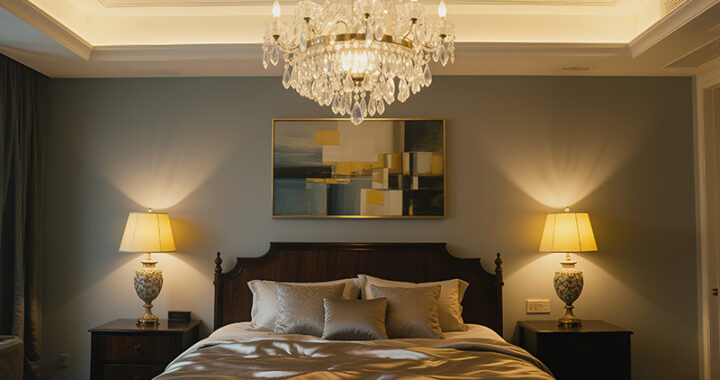 Best Luxury Accent Lighting for Every Room
Best Luxury Accent Lighting for Every Room 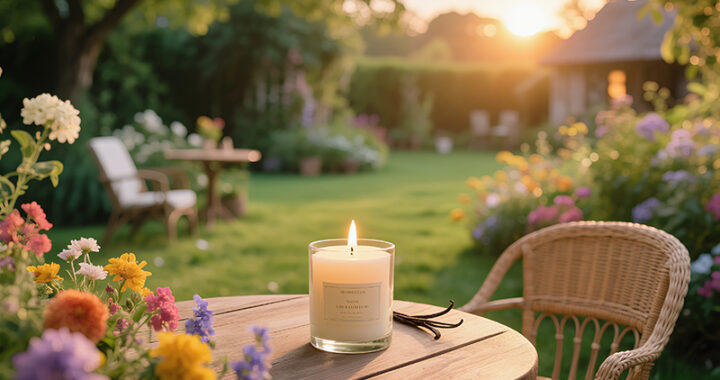 Best Luxury Candles for a Cozy and Elegant Home
Best Luxury Candles for a Cozy and Elegant Home 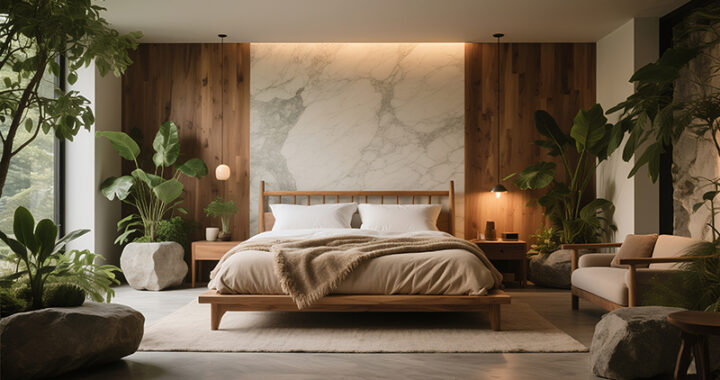 Best Luxury Bed Frames for a Stylish Bedroom
Best Luxury Bed Frames for a Stylish Bedroom 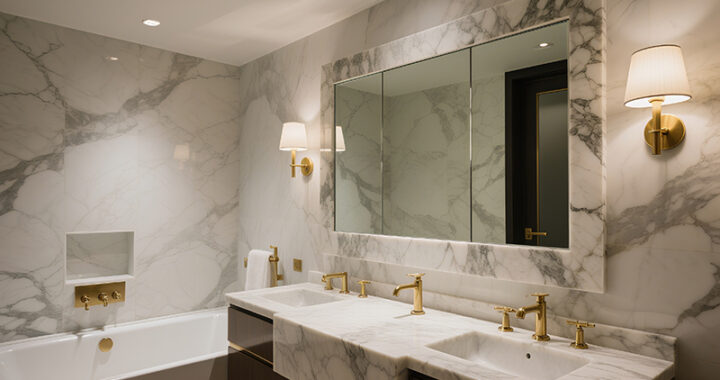 Best Luxury Bathroom Mirrors for a Stylish Touch
Best Luxury Bathroom Mirrors for a Stylish Touch 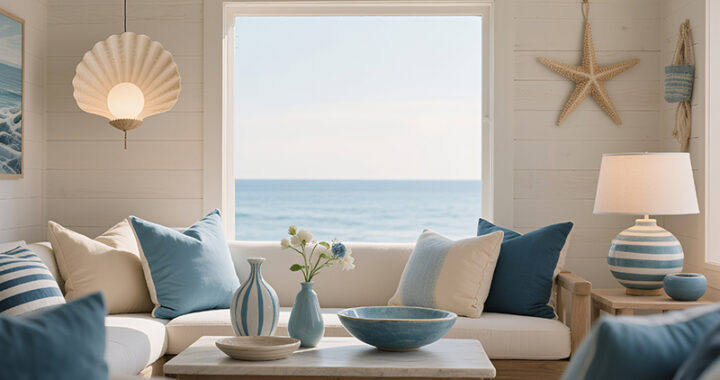 Luxury Coastal Home Decor Ideas: Elevate Your Beach House with Timeless Elegance
Luxury Coastal Home Decor Ideas: Elevate Your Beach House with Timeless Elegance 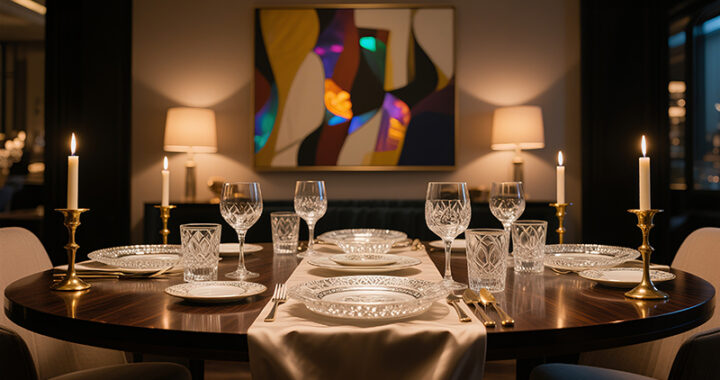 Elevating Your Dining Experience: Luxury Glassware for Discerning Collectors
Elevating Your Dining Experience: Luxury Glassware for Discerning Collectors